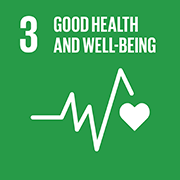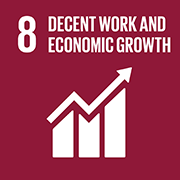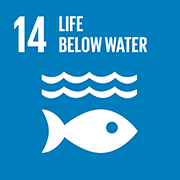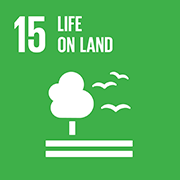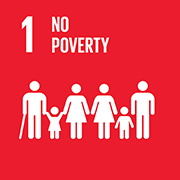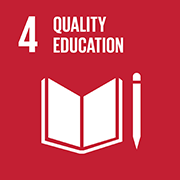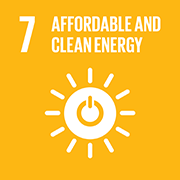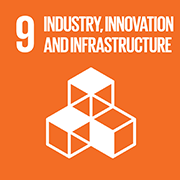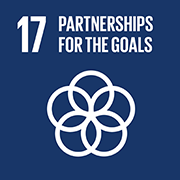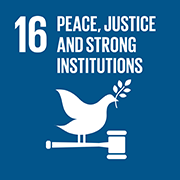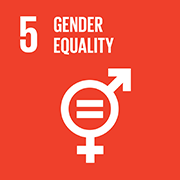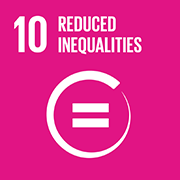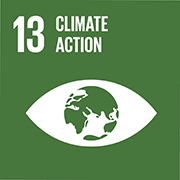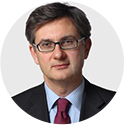
A talk between Stefano Cao and Davide Vassallo (Global Managing Director, DuPont Sustainable Solutions)
In the current market context, the question that international players are asking is: how can we continue to offer high value-added products and services?
'Saipem’s ability to design and realise vessels and projects in a way that often goes beyond expectations is the main value we bring to the market.'
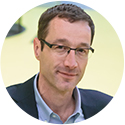
A talk between Stefano Cao and Martyn Rademakers (Managing Director of Center for Strategy & Leadership and Adjunct Professor of Corporate Strategy at Amsterdam Business School, University of Amsterdam)
Human capital development is of paramount importance as a contributing factor to the achievement of sustainability goals. How does Saipem contribute to human capital development in the communities where it operates?
'Saipem has responded to the environmental, territorial, social and economic challenges with a sustainable business model which, even in periods when rules were less stringent, went beyond what was demanded.'
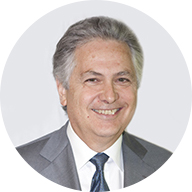
Stefano Cao
Saipem CEO
9,976
€ mln
Total sales
14,219
€ mln
Total backlog
5.66
€ bln
Total goods and services ordered
+ 1.6
mln
Training man-hours
40,305
Employees
68
Countries
Where Saipem operates
80
%
Local personnel
29,959
Vendors
South Caucasus Pipeline Expansion (SCPX) Project
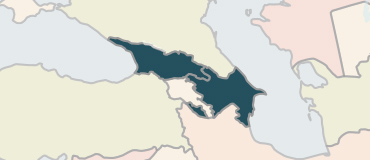
Field location: Azerbaijan and Georgia
| Value of the contract | $735 mln |
| Peak of personnel engaged in project activities (including SAJV subcontractors) | 4,189 |
| New diameter pipeline through Azerbaijan and Georgia | 48" |
| Pipeline through Azerbaijan and Georgia | 487 km |
| Total system capacity | 23 bcma |
Project Description
The South Caucasus Pipeline (SCP) is a gas pipeline that transports gas from Sangachal Terminal to the Georgian-Turkish border. The construction process commenced in 2004 and was completed by the end of 2006.
The South Caucasus Pipeline Expansion (SCPX) Project, along with the Shah Deniz Stage 2 (SD2), are part of the Shah Deniz Full Field Development (FFD), which aims to bring gas from Azerbaijan to Europe and Turkey.
The objective of the SCPX Project is to expand the capacity of the existing SCP system to accommodate additional gas throughput from the SD2 expansion development in the Caspian. The Project base-case design is to facilitate an increase in gas transmission capacity in the existing SCP pipeline system by an additional 16 bcma to create a total system capacity of 23 bcma. This expansion will be achieved by the installation of two new compressor stations and two pipeline loops.
The project is also linked with the initial section of the TANAP (Trans Anatolian Pipeline) on the border between Georgia and Turkey.
The completion of the project is scheduled for 2018.
SCPX is the first stretch of the so-called Southern Gas Corridor, the system that is designed to export gas from the offshore field of Shah Deniz from Azerbaijan to Puglia (Italy), via the TANAP and TAP (Trans Adriatic Pipeline), also to be constructed in the future.
Egina UFR Project
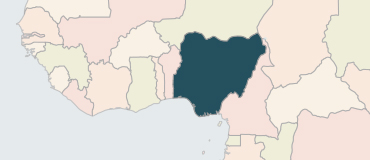
Field location: 100 km off the Nigerian coast, south of Port Harcourt
| Value of the contract | $3 bln |
| Max water depth | 1,750 m |
| Oil production and water injection flow lines | 52 km |
| Gas export pipelines | 20 km |
| Umbilicals | 80 km |
| Main worksites for onshore activities | 4 |
| Main vessels for offshore activities | 3 |
Project Description
The Egina Field is located off the coast of Nigeria within OML 130 (Oil Mining Lease), some 200 km from Port Harcourt in a water depth ranging from 1,150 to 1,750 m.
The development of the Egina field is based on subsea wells connected to a Floating Production, Storage & Offloading (FPSO) facility and stabilised crude oil for export via oil tankers using an offloading buoy. There is also a gas export pipeline from FPSO to the AKPO gas export pipeline tie-in point.
The scope of work of Saipem’s project for the Flowlines, Risers, Offloading Systems and Offshore Works (UFR) for the Egina Main Field is listed below:
- EPCI of umbilicals, flowlines and risers;
- T&I of subsea production system including 6 subsea production manifolds with 6 slots;
- T&I of offloading buoy moored 2 km from the FPSO;
- EPCI of 16 off FPSO mooring anchors.
Kaombo FPSO Project
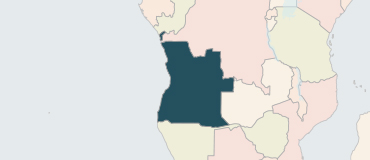
Field location: Block 32, Angola
| Value of the contracts | $4 bln |
| Max water depth | 1,950 m |
| Standard cubic feet/day | 100 mln |
| Barrels of oil storage capacity | 1.7 mln |
| Barrels/day water injection capacity | 200,000 |
| Barrels/day oil treating capacity | 115,000 |
Project Description
In 2014, Saipem was awarded two contracts for the Kaombo Field Development Project, located in Block 32 in Angola:
- the first, for the engineering, procurement, construction, supply and commissioning of two converted VLCCs (Very Large Crude Carrier) into FPSO (Floating Production Storage and Offloading) units;
- the second, for the field operation and maintenance services of the two vessels (a 7-year contract).
The six fields involved cover an area of 800 km2 in the central and southeast part of the block, connected via 300 km of subsea pipelines to the two FPSO units, Kaombo Norte and Kaombo Sul.
The Kaombo FPSO Project is an international project with fabrication and installation works spread all around the world, onshore and offshore.
Framing
- Research & analysis
- Identification of significant issues
Engagement
- 134 external stakeholders involved in a survey
- Saipem employees (792) and senior manager (59) survey
Analysis & Validation
- Preliminary results definition
- Validation by Sustainability Committee and Corporate Governance Committee and Scenarios
Sustainability Priorities
Safety
Safe operations, asset integrity and process safety
Training and development
Technological and business innovation
Anti-Corruption and ethical business practices
Labour rights
Ethical supply chain
Health and well-being
Spill prevention and response
Local employment
Transparency
Energy efficiency
RUNNING SAFE OPERATIONS FOR PEOPLE AND THE ENVIRONMENT
Being a global leader carries with it the duty to operate responsibly towards stakeholders and society. Conducting safe operations in order to avoid negative impacts on people, assets and the environment is a top priority and a non-negotiable value for Saipem.
People Safety
0.78
TOTAL RECORDABLE INCIDENT FREQUENCY RATE
significantly better compared to previous years (1.08 in 2015) and the annual target (1.04).
~ 800
LiHS EVENTS CARRIED OUT
Leadership in Health and Safety (LiHS) is a cultural change programme whose aim has been, since its launch in 2007, to continuously improve Saipem’s safety culture.
Environment safety
Saipem aims to minimising and keeping any environmental impact arising from its activities under control, as well as for regularly striving for continuous improvement. Given the results of risk analysis on Saipem operations, spill prevention and preparedness are a top priority.
+400
SPILL DRILLS PERFORMED
All personnel involved in spill responses are duly trained in emergency drills carried out regularly as part of annual drill plans.
INNOVATION IS IN OUR DNA
Due to changes in the global scenario, Saipem continues to focus on pursuing innovation to cope with challenges in the near-future and remain competitive in the long-term.
Our innovation model
Saipem’s technology approach is strongly oriented to projects/services execution.
+2,300
PATENTS IN FORCE
Technological know-how is a strategic and fundamental asset for Saipem and, as such, must be suitably managed, developed and protected.
Technology development
Onshore: our innovation effort is mainly reflected in gas monetization, refineries and management of CO2.
Offshore: our innovation effort is mainly focused on subsea fields in order to make their exploitation technically and economically viable.
Transformative innovation
Innovation Factory: an idea incubator aimed at testing solutions to address the challenges of the energy sector, by adopting new technologies and methodologies.
Idea Innovation Challenge: initiative to create new innovative ideas through collaboration and knowledge sharing with people.
Technology intelligence
We are scouting new technologies within and outside of the Oil & Gas industry to identify disruptive emerging technologies.
+60
JOINT INDUSTRY PROJECTS
Our collaborative approach allows us to be receptive to crossover technologies.
HUMAN CAPITAL DEVELOPMENT
People represent Saipem’s main asset and business success starts with them.
Nurturing competence and know-how
Skills and know-how are key asset and as such are duly monitored and developed through continuous analysis.
+1.6
mln TRAINING MAN-HOURS
Training and people development represent key levers in the Company’s business strategy: learning programmes ensure the development of professional know-how and behavioural competences.
60%
EMPLOYEES WHOSE PERFORMANCE WAS EVALUTAED
We base our compensation policies on the principle of fairness and merit.
Creating value by employing locally
80%
LOCAL EMPLOYEES
Providing job opportunities, together with transferring know-how and capabilities, creates local value.

PROMOTING HUMAN AND LABOUR RIGHTS
'Saipem is committed to recognising, protecting and promoting human rights in all its operations and along its entire supply chain. But we strive to go beyond this by contributing also to the creation of the best conditions possible for the practical implementation of those rights.' - Saipem’s CEO
58%
EMPLOYEES COVERED BY COLLECTIVE BARGAINING CONTRACTS
We have a sound record of relations with trade union organisations in a variety of locations and covering several segments of our business.
62
COUNTRIES ASSESSED ON LABOUR AND HUMAN RIGHTS
A country based risk assessment is the preliminary step to deliver a customised human and labour rights training programme.
+100
AUDITS ON LABOUR RIGHTS SINCE 2011
Qualification audit campaign to assess the alignment of suppliers with human and labour rights standards and Saipem’s principles.
Economic and Administrative Business Register Milan no. 788744 Taxpayer's code and VAT number 00825790157.

